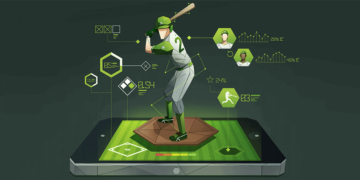iTunes is very well known for tossing about the most absurd of mistakes on Windows 10 and the common mistake is iTunes Error 0xe80000a. iTunes would rarely fail you within this department if it struggles to check the details of your iPhone just to flat out decline to run your songs.
Of course, I hope you understand my sarcasm, which comes from the annoyance of facing a lot of niggles like that.
How Does this Error Occurs?
Just that other day, the Windows 10 PC welcomed me to an unexplained iTunes error 0xe80000a and 0xe8000015 error prompt, ‘iTunes did not attach to this iPhone, so leaving me clueless.
The error can occur in many forms like your computer can suddenly fail to get contents or may not accept the media files. It is a very common error on Windows computers. To install that iOS 13 beta, I needed to back my iPhone or the timing couldn’t have been worse.
How to Fix it?
Fixing an issue involves a lot of effort. One can solve it in a few ways. To fix the iTunes error 0xe80000a, 0xe8000003, 0xe8000015, one can follow any of the methods which are stated below.
Method – 1: Update windows, iOS, and iTunes
The very first thing you ought to do is go on an upgrading spree. When an iTunes 0xE80000A bug is triggered by device or hardware incompatibility, it’s also likely to be resolved by downloading the new Windows 10, iOS, or iTunes upgrades. Now the question is how to update it? Start by running Windows 10 updates. To do this, on the menu bar, type Check for Alerts, and then press Open.
From the Windows Update box at the top, press Search for Updates and, if accessible, install any upgrades. Whenever it comes to iOS, Open your iPhone’s settings screen, tap General, then press Device Update.
Click Download and Install if there are any changes available. Update iTunes at last. In the Start menu, start typing Apple Software Update, but instead press Enter. Install it whether there are any changes available. Download updates for similar Apple apps such as iCloud whilst you’re at it, as well.
Method – 2: Disable Antivirus and Security software on PC
Perhaps the communication conflict between your iPhone or iTunes app may also be triggered by third-party antivirus and security software. You should delay or disable third-party antivirus or security applications on your Windows PC briefly to test this. If you have done so, by unplugging or re-plugging the cord, reconnect the connection from your device to your phone or tablet. Check unless the problem is still there, then.
Method – 3: Restart Services for Apple Mobile System
A decent choice is this. So this technique is very useful for computer plugging or unplugging related issues. This successful approach will potentially help you repair a Windows 10 device with iTunes error 0xe80000a and unknown error 0xe8000065.
- Press Windows + R Key, select services.msc, and then click OK.
- Scroll to the bottom for AppleChargerSrv or check
- Now, right-click or tap Assets on Apple Mobile Devices App.
- Search whether this operation is manual or automatic. Shift it to Automatic, unless the service is manual, or press Start.
- Tap on OK after to save.
Method – 4: Place or Privacy Settings Reset
Place or privacy settings on the Apple iPhone and iPad are often corrupted. So this is another explanation and for the error coming up with iTunes 0xE80000A. The trust privileges which were provided to your iPhone or iPad before you even connected it to your PC are present in such types of environments to Apple iOS Operating Software. You have to reboot them to resolve the error. Please take these measures to reset the position or parental controls.
- Phase 1: Open the Configuration app from the app store. Now, press the General Menu and instead tap the Reset Menu.
- Phase 2: Click on Location or Privacy on the next page. You’ll get proof of the reset afterward. Tap it and finish the method.
Conclusion
Thus these are a few of the ways through which you can get rid of this error. Hopefully, you won’t be disappointed anymore by an iTunes error 0xE80000A, so you can now comfortably attach your iPhone to iTunes. There’s no excuse, though, for these strange things to turn up in this way.













































